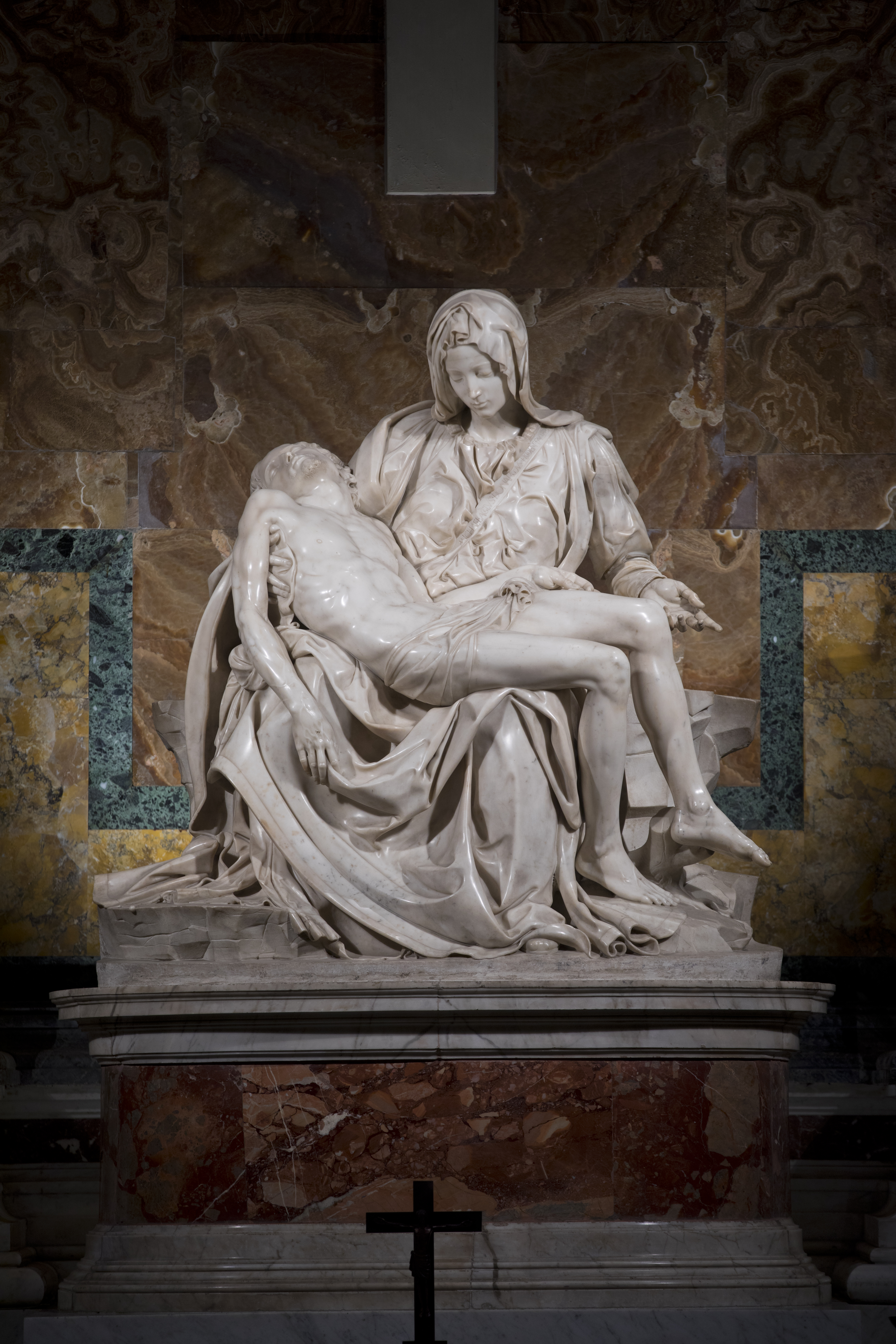It is one of the world’s best-known and beloved sculptures. And new lighting helps to bring its full beauty better to life.
Michelangelo’s Pieta resides in St. Peter’s Basilica and is one of the favorite destinations of pilgrims visiting the Vatican from all over the world. The artist created the work in 1498-99.
Cardinal Angelo Comastri, President of the Fabric of Saint Peter, explains: “The new lighting, treated also from a scientific point of view, enables one to admire and understand better the universal value of Michelangelo’s work. The “Pieta” is, in fact, Michelangelo’s faith sculpted in marble. The Artist wished to make evident, in Mary’s young face, an ever-timely message: to avoid sin is the only real beauty care and everlasting youth. The work can now be enjoyed even more.”
Pietro Zander, Director of the Office of Conservation and Restoration of the Fabric of Saint Peter, underscores: “The factor of the light is very important. Michelangelo thought it out carefully, with very low lighting values, polishing the marble surface carefully so that a few candles could make the marble group shine. It’s the first time that the Fabric of Saint Peter lights it with such high care.”
Michaelangelo worked most of his life in Florence but created the Pieta during a five-year period he spent in Rome. It is the only one of his renowned sculptures that he actually signed. And during restoration work in the 1970s, a possible second signature was discovered.
The Pieta has been damaged twice. Mary lost four fingers in 1736, which had to be restored. And in 1972 a hammer-wielding man attacked the statue. After it was repaired, protective glass was installed between the statue and visitors.
In addition to the substitution of preceding devices with others that use the latest LED sources, the new techno-lighting intervention uses compact solutions of minimal visible clutter with a warm white tone. The new system allows the lighting in different scenarios.
North Scenario – Statuesque
The light is focused on the sculpture, while the floor, ceiling, and background are minimally lighted. A prevailing direction isn’t perceived; there is instead a balance of chiaroscuro that restores the plasticity of the work and enables one to pause either on a single detail or on the harmony of the whole.
East Scenario – Cutting of Light
A beam of light illumines the Pieta. The direction of incidence is evident, the shades marked. The subdued lighting of the faces and the background frame the entire marble group. Luminous beams of frontal projectors, with different grades of dimming, almost obscure the faces and floor.
South Scenario – Full Light
All the devices are turned on. The sculpture is absolutely dazzling and itself becomes a source of light. The faces and the floor have slightly less illumination because everything is concentrated on the beam in which the sculpture is. The light of the central vault, of the arches and of the side vaults is more sustained.
West Scenario – Dailypieta
Thought out for the pilgrim or visitor of the Basilica, who enjoys the work through the glass of protection. Therefore, the lighting is frontal: the beams of light intersect with symmetrical angles to restore to the spectator the plasticity of the work. The central vault is lighted uniformly, whereas the arches and the side barrel vaults receive a light of inferior intensity.
Here is a video showing the various scenarios:
https://drive.google.com/file/d/1TrPEyuz86yE8YrGLfluuRNeVc5J0GB05/view

© Vatican Media
Rome: Pilgrims Get Improved View of Pieta
New Lighting of Michelangelo’s Famous Sculpture in Saint Peter’s Basilica


